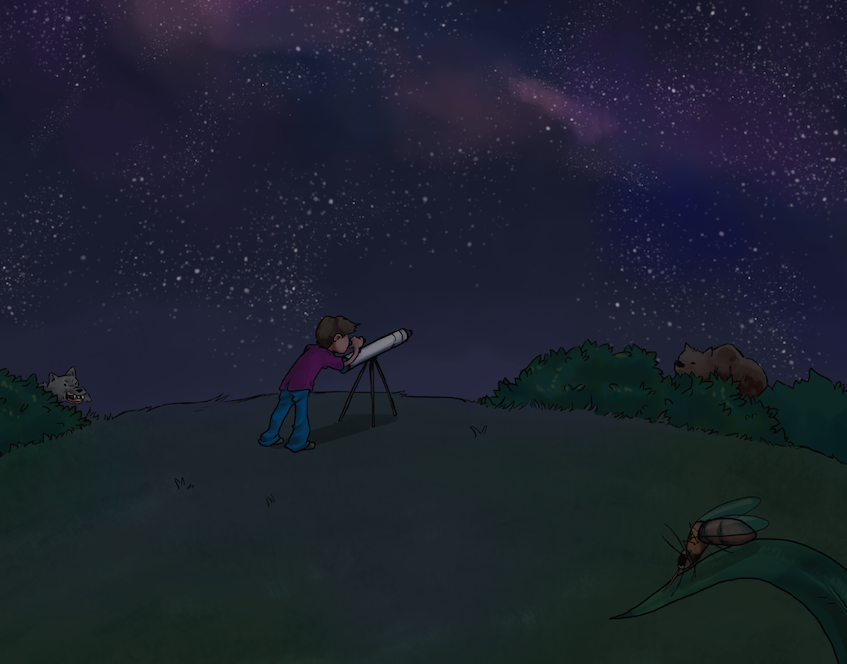By Megan Lambert (The Cascade) – Email
Print Edition: July 15, 2015
 It’s very easy to die while stargazing. However, there are a few ways to stay happy, warm, and alive.
It’s very easy to die while stargazing. However, there are a few ways to stay happy, warm, and alive.
The first tip I have is to bring friends. They can help you carry things, bring extra snacks, and keep you safe from wild animals or creepy mutants that may be lurking in the neighbouring corn fields.
Also, bring bug spray. The best way to ruin a beautiful view of twinkling stars in the night sky is by slapping away a swarm of bloodthirsty and disease-ridden mosquitos. If you can, bring a citronella-scented air freshener. Avoid candles; there’s a ban on all open flames right now because the grass is dry and susceptible to catching fire easily. A wildfire is just another way you could die from stargazing.
The Fraser Valley’s temperature rises to a boil in the summer, making us feel like we’re in a pot of fermenting sweat. Don’t let this fool you — it cools off around 10 p.m. Bring blankets, pillows, and either a sleeping bag or a tarp to put on the ground to keep you comfortable, clean, and warm.
Speaking of the ground, one way I find myself encountering death is by almost getting run over by cars. Do not lie on the road. Find a friend with a pick-up truck and lie in the bed, or lie on the hood of your car. If you don’t have access to a truck or your car is too fragile to support the weight of people, go into the park and lie in the open area between the trees. Bring a lantern and something reflective so you are visible.
Rather than an imminent danger, like the threat of being flattened by cars or eaten alive by bugs, I mostly find myself facing the threat of dying from heartbreak due to blurry photos. As a social-media junkie, my mantra is “pics or it didn’t happen,” so snapping a shot of the stars is high on my priority list.
Watching the night sky is a humbling and transcendent experience, where we realize we are merely mortal. Seeing how large the universe is allows you to forget your small and earthly problems for a while. If you don’t feel the need to share that on Facebook, I get it. But if you’re like me and you want to have pictures to look back on in your old age, bring a DSLR camera to capture the experience. Don’t use your smartphone. Some phones have beautiful cameras, but starry skies are among the most difficult scenes to capture.
A DSLR will give you more freedom to adjust the settings to get the effect you want. An article from the Nikon USA website explains how to take photos of the night sky: “To photograph the stars in the sky as pinpoints of light, start with as wide an F/stop as your lens allows and [a] shutter speed of about 20 seconds. Any more time than that and the stars will begin to blur. Increase the ISO as needed for a good exposure.”
To this, I’ll add just one thing. Bring a tripod. Your camera will take in more light and therefore take longer to snap the photo, so having it in your hands means it’ll be prone to shaking and will thus become blurry. A tripod will make your camera stable, giving you more control over the angle and frame of the photo.
Lastly, beware of falling meteors.

